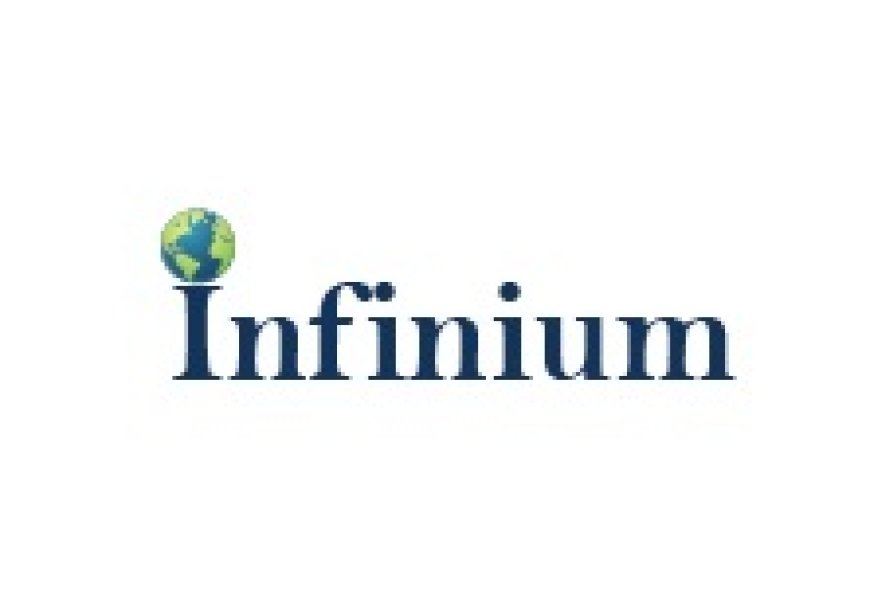Global Cancer Vaccines Market Poised for Major Growth as Research and Development Accelerate
A complete view of cancer vaccines industry is provided based on definitions, product classification, applications, major players driving the Global cancer vaccines market share and revenue.

The market study covers the Global Cancer Vaccines Market crosswise segments. It purposes at estimating the market size and the growth prospective of the market segments, such as supplier, application, organization size, and business vertical. The study also includes a detailed competitive analysis of the key players in the market, along with their enterprise profiles, key observations related to product and industry offerings, new developments, and key market plans.
To Know More Request Sample of this Report@ https://www.infiniumglobalresearch.com/reports/sample-request/1096
A complete view of cancer vaccines industry is provided based on definitions, product classification, applications, major players driving the Global cancer vaccines market share and revenue. The information in the form of graphs, pie charts will lead to an easy analysis of an industry. The market share of top leading players, their plans and business policies, growth factors will help other players in gaining useful business tactics.
The forecast for Global cancer vaccines market information is based on the present market situation, growth opportunities, development factors, and opinion of the industry experts. An in-depth analysis of the company profiles, cancer vaccines market revenue at country level and its applications is conducted. The analysis of downstream buyers, sales channel, raw materials, and industry verticals is offered in this report.
The cancer vaccines market is experiencing significant growth, driven by advancements in technology and increasing global cancer rates. This sector focuses on developing vaccines designed to either prevent or treat cancer by enhancing the immune system’s ability to target and destroy cancer cells. Unlike traditional vaccines aimed at infectious diseases, cancer vaccines are engineered to address specific tumor antigens or bolster immune responses in individuals with existing cancers. The market includes various vaccine types such as peptide, DNA, whole-cell, and viral vector vaccines, each tailored to different cancer types and patient needs.
The expansion of the cancer vaccine market is fueled by the rising incidence of cancer and the demand for innovative treatments that offer better patient outcomes and cost-efficiency compared to conventional methods. Governmental and international health organizations are supporting vaccine approvals, which, combined with a growing focus on personalized medicine, is propelling market growth. Collaborative efforts among biotech firms, pharmaceutical companies, and academic institutions are accelerating the development of new vaccines. Additionally, the shift towards preventive care and the integration of vaccines into diverse healthcare settings are enhancing market dynamics and promising a transformative era in cancer treatment.
Segments Covered in this Premium Report:
The cancer vaccines market is segmented based on technology, type, indication, and end-user. Technology segments include whole cell, dendritic cell, antigen/adjuvant, recombinant, and viral vector/DNA vaccines. Cancer vaccines are classified as preventive or therapeutic based on their function. Market segmentation also considers cancer type (prostate, cervical, etc.) and target patient population (adults or pediatrics).
Regional Analysis
The cancer vaccines market is analyzed across North America, Europe, Asia-Pacific, and the Rest of the World. Market size and key trends for each region are provided from 2024 to 2032.
- North America: Dominated by the U.S., this region is the largest market for cancer vaccines.
- Asia Pacific: Emerging as a significant market, with countries like India and China driving growth. Projected to experience rapid expansion from 2024 to 2032.
- Europe: A substantial market with several key players.
Research Methodology:
The report provides deep insights into the demand forecasts, market trends, and micro and macro indicators. In addition, this report provides insights into the factors that are driving and restraining the growth in this market. Moreover, The IGR-Growth Matrix analysis given in the report brings an insight into the investment areas that existing or new market players can consider. The report provides insights into the market using analytical tools such as Porter's five forces analysis and DRO analysis of the cancer vaccines market. Moreover, the study highlights current market trends and forecasts for 2024-2032. We also have highlighted future trends in the market that will affect the demand during the forecast period.
Competitive Landscape
GlaxoSmithKline Plc, Aduro BioTech Inc., Astellas Pharma Inc., Merck & Co., Inc., CSL Limited, Sanpower Group, Sanofi Pasteur, Pfizer Inc, Serum Institute of India Pvt. Ltd., and Others.
Report Overview: https://www.infiniumglobalresearch.com/reports/global-cancer-vaccines-market
Future Outlook:
The cancer vaccines market is poised for significant growth as advancements in immunotherapy and personalized medicine continue to accelerate. With ongoing research focused on developing vaccines that target a broad spectrum of cancers and improved understanding of tumor antigens, the market is expected to expand. Technological innovations, such as mRNA vaccines and combination therapies, are likely to enhance treatment efficacy and patient outcomes. Additionally, increasing government and private investments in cancer research will drive further advancements, positioning the market for robust expansion.
Conclusion:
In summary, the cancer vaccines market is on a promising trajectory, supported by rapid technological advancements and growing research initiatives. As new therapeutic options emerge and clinical trials yield positive results, the market's potential to revolutionize cancer treatment becomes more evident. Continued investment and innovation will be crucial in achieving broader application and accessibility, ultimately contributing to improved survival rates and quality of life for cancer patients.












